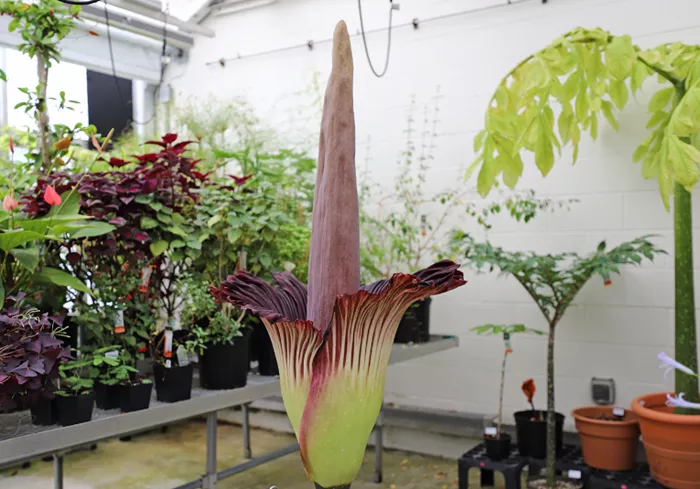I believe there is much we can learn from the world of plants. Recently, I read a book by Zen master Thich Nhat Hanh, where he discussed the idea of watering the seeds in our consciousness. These “seeds” can be ones of joy, kindness, and compassion—or seeds of despair, hatred, and fear.
He explained that when we walk in a forest, we often appreciate its beauty. Some plants are thriving, while others are struggling or dying. However, if a dying tree is in our backyard, it tends to dominate our focus. We struggle to notice or appreciate the other trees, shrubs, and flowers flourishing nearby.
Plants, like people, face challenges. One of the most unique and bizarre examples is the corpse flower (Amorphophallus titanum). This plant grows a single leaf that can resemble a small tree. The leaf may reach 20 feet in height with a diameter of 16 feet. The corpse flower undergoes several leaf cycles over 8 to 20 years before it blooms once. This requires a tremendous amount of energy for a flower that only lasts 24 to 36 hours.
What makes the corpse flower particularly fascinating is its scent. The bloom emits a smell that resembles rotting flesh. It’s so strong that it is said to literally take your breath away. At Indiana University Bloomington, there is a corpse flower named Wally. A time-lapse video of Wally’s bloom is available online.
Before I return to the Zen teachings and a question I pondered this morning, there’s one more thing to consider. Human brains are wired with a negativity bias. We tend to focus on the negative more than the positive. This trait helped our ancestors survive, but in modern times, it can be counterproductive.
How I Would Handle a Corpse Flower in My Backyard
So, if I had a corpse flower in my backyard and couldn’t remove it, how would I deal with it? I’d choose to leave it alone and let it grow, but I would surround it with more pleasant plants.
I might plant some sturdy oak trees with deep roots that can withstand high winds and fluctuating temperatures. I’d also plant a variety of flowers—both native and exotic—of different sizes and colors. To ensure all these plants thrive, I would likely expand my sprinkler system.
This approach could help me overcome my brain’s negativity bias. Yes, the corpse flower would still be there, but perhaps I could create a beautiful space around it for everyone to appreciate. By focusing on the positive, I could nurture seeds of kindness, compassion, and understanding, rather than hate and anger.
Related topics:
Study Reveals Polystyrene Nanoplastics Are Building Up in Plant Leaves, Threatening Their Health


